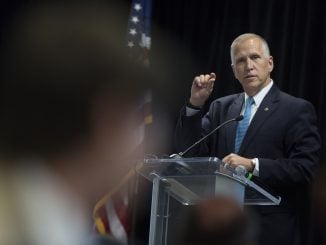
Why do I feel that I have seen this movie before?
I would like to think that learning is cumulative. But I’m beginning to think that every generation or two, people need to learn all over again the lessons that have unaccountably been forgotten or tossed aside. The elderly among us can see this, even as young people are inclined to insist that they are experiencing things never before experienced by humans and that this time will be different.
Let’s take it issue by issue:
INFLATION
The consumer price index for June rose on an annual basis before seasonal adjustment by 5.4%. That’s higher than May, which suggests that inflation is accelerating. And it’s far above the 2% annual rate, which is the professed goal of the Federal Reserve. Treasury Secretary and former Fed Chair Janet Yellen insisted that the jumps in prices are just temporary adjustments to the COVID-19 economy, although she’s extended the period for adjustments. Current Fed Chairman Jerome Powell said he’s not worried and will keep interest rates low.
They’ve got the bond market on their side. But those expressing alarm include not only the Wall Street Journal editorial page but also Harvard economist and Clinton administration Treasury Secretary Lawrence Summers. He’s been arguing for months that President Joe Biden’s administration is pumping too much money into the economy.
Consumers may agree: A New York Fed survey showed they expect a 4.8% annual rise in prices over the next year. We learned in the 1970s that once people start expecting inflation, they start to feed it by raising prices and boosting wages to keep ahead of the trend.
We know how to get rid of inflation. Former Fed Chairman Paul Volcker — appointed by Jimmy Carter and supported by Ronald Reagan — raised interest rates and triggered a steep recession from which a low-inflation growth economy eventually emerged. Are we ready for that kind of pain again?
CRIME
Calendar year 2020 saw a 25% increase in homicides, the highest since 1960 and higher than in any single year in the 1965-75 decade when the number of violent crimes almost tripled. They seem to be rising by similar rates this year.
Many people don’t like to admit it, but this is obviously a result of the de-policing movement urged by Black Lives Matter and cheered on by liberal editorial writers, corporate moguls and Silicon Valley monopolists.
They applauded and declared exempt from COVID-19 restrictions the “mostly peaceful” demonstrations against supposed systemic police misconduct. Few, if any, deplored the nearly 600 violent riots that caused some $2 billion in damage. If the experience of the 1960s is a guide, this will severely damage modest-income neighborhoods for decades after.
Once again, solutions are visible for those with sufficient memory. The intensive policing tactics of Rudy Giuliani and Bill Bratton in New York City in the 1990s — copied and adapted by many others around the country — cut violent crime rates by more than half. Thousands of Black lives were saved — and the number of Black people with prison records reduced. Neighborhoods once abandoned to criminals were revived with new jobs and opportunities.
Can that happen again? Maybe Eric Adams, the ex-New York Police Department officer who seems sure to be elected mayor of NYC in November, can show the way. Or maybe we’ll have to wait out a couple of high-crime decades, as we did after 1965-75.
ILLEGAL IMMIGRATION
Does the United States need 1 or 2 million new illegal immigrants? The Biden administration apparently thinks so. It has opened the southern border to tens of thousands of supposed asylum seekers; not just from Central America and Mexico but also from Haiti, the Middle East and Africa.
The illegal immigrant population increased from 3.5 million in the 1990s to 8.4 million in 2000 and peaked at 12.2 million in 2007, then dropped and leveled off at 10.5 million in 2017, according to Pew Research.
The 2007-08 recession reduced low-skill immigration over the southern border to zero. Trump administration agreements with Mexico kept it down. As a result, low-skill Americans saw greater percentage wage gains than the rich, even as immigrant inflow became increasingly high-skill. What was so terrible about that?
It may be that these problems will just solve themselves: Inflation will subside, as many economists expect; violent crime will subside, de-policing or not; recent border crossers will meet their court dates and legalize their status.
But maybe not. In which case, doesn’t it make sense to go back and update policies that worked rather than watch this movie go on at agonizing length?
Michael Barone is a senior political analyst for the Washington Examiner, resident fellow at the American Enterprise Institute and longtime co-author of The Almanac of American Politics.



